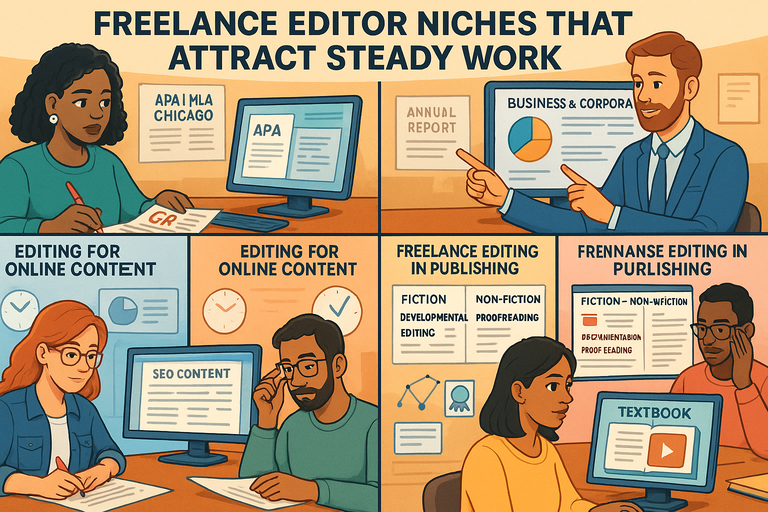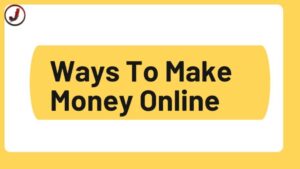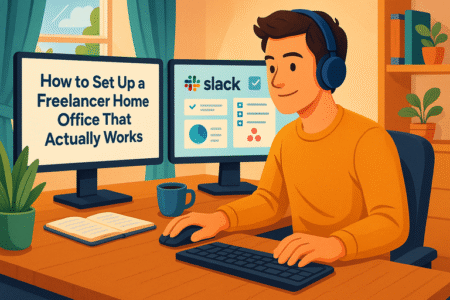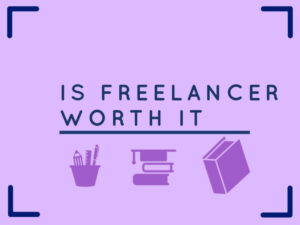Table of Contents
Freelance editor jobs often sound unpredictable, but what if you could focus on niches that consistently bring in projects? As a freelance editor, you have the power to shape your workload by choosing industries that never run out of demand.
Where should you focus your skills to attract steady work and reliable income? This article explores the most promising niches for editors who want more than one-off gigs.
Academic Editing For Research Papers And Journals
Freelance editors who specialize in academic work often find themselves with more opportunities than they can take on. Universities, researchers, and students worldwide are constantly producing papers that need to be polished before submission.
This niche isn’t just busy—it’s evergreen.
Why Academic Editors Stay In High Demand
Research never stops. Whether it’s medicine, engineering, or social sciences, new studies are being written every day. Professors and graduate students need their work published in peer-reviewed journals, but even the brightest minds can struggle with clarity, grammar, or formatting.
That’s where a freelance editor comes in. Academic journals have strict requirements, and rejection often comes down to poor presentation rather than weak research.
In my experience, a well-edited paper can move from “desk rejection” to “accepted with minor revisions.” If you position yourself as someone who understands academic standards, you’ll attract a steady stream of clients who see editing as a necessity, not a luxury.
The steady demand also comes from global growth. Non-native English speakers make up a massive portion of academic writers, and they often need an editor who can refine their work while preserving their unique voice. That combination keeps work flowing year-round.
How To Navigate Style Guides Like APA, MLA, And Chicago
Every academic field has its own style bible, and you’ll be judged on how well you follow it. I suggest keeping a digital copy of the APA Publication Manual, MLA Handbook, and Chicago Manual of Style bookmarked or on your desk. These aren’t optional references; they’re your daily toolkit.
Here’s how I usually approach them:
- APA (American Psychological Association): Popular in psychology, education, and social sciences. Heavy focus on in-text citations and precise reference lists.
- MLA (Modern Language Association): Used in literature and the humanities. Less strict with dates but particular about author names and page numbers.
- Chicago Manual of Style: Common in history and publishing. Offers two systems: notes and bibliography (often seen in history) and author-date (used more in sciences).
I often tell new editors: Don’t just memorize the rules—learn how to cross-check them. Journals have quirks. For instance, a medical journal might use APA but tweak the citation style slightly. Always double-check the journal’s submission guidelines alongside the style guide.
A practical tip: Tools like Zotero can help manage references, but they’re not flawless. I’ve seen them mess up capitalization or punctuation, so you still need a sharp editor’s eye.
Building Trust With International Students And Researchers
One of the biggest opportunities in academic editing comes from working with international clients. Many brilliant researchers write in English as a second or third language. They often feel self-conscious about clarity, which makes them value a freelance editor’s support even more.
But this is where relationship-building matters. I recommend approaching edits with sensitivity. Don’t rewrite their entire voice. Instead, make suggestions that enhance clarity without erasing their unique phrasing.
I sometimes leave comments explaining why I’ve changed a word or sentence, which helps build long-term trust.
Think of it as being a coach rather than just a corrector. A researcher who feels supported will likely come back to you for their next paper—and refer colleagues.
Over time, you can become their go-to editor for dissertations, grant applications, and book chapters. That’s the kind of steady pipeline most freelancers dream about.
Business And Corporate Editing Opportunities
If academic editing is about precision and standards, corporate editing is about clarity, persuasion, and reputation. Companies live and die by how well they communicate, and a freelance editor can help them keep their voice sharp and professional.
Editing Annual Reports, Proposals, And White Papers
Businesses put out high-stakes documents all the time—investor reports, sales proposals, white papers designed to showcase thought leadership. These aren’t blog posts; they’re documents that influence funding, partnerships, or reputation.
When I edit these, I focus on three things: accuracy, tone, and flow. Numbers have to be correct, but so does the language.
For example, an annual report needs to strike a balance between professional and approachable. Too technical, and stakeholders get lost. Too casual, and the company risks looking unprofessional.
White papers are a different beast—they’re half research, half marketing. Here, I recommend focusing on making complex ideas digestible.
A white paper on cybersecurity might start with dense jargon, but your job as an editor is to make sure even a moderately informed reader can walk away understanding the value proposition.
The Role Of Editors In Brand Voice Consistency
Every business has a “voice,” whether they’ve formally defined it or not. Some want to sound authoritative, others conversational. A freelance editor’s job is to make sure that voice doesn’t wobble.
Let me give you an example. I once worked with a company whose marketing materials sounded upbeat and friendly, but their reports were written like academic journals.
The disconnect confused clients. My role was to smooth that out, creating a style guide that carried the same tone across all documents.
That’s the hidden power of editing in business: You’re not just fixing grammar—you’re shaping brand identity. When you get it right, companies notice, and they’ll keep hiring you because you make them look polished and trustworthy.
How Corporate Clients Value Accuracy And Professionalism
In academia, mistakes might mean rejection. In business, mistakes can mean money lost or reputation damaged. Imagine a proposal with a typo in a client’s name—that’s a dealbreaker. Or a financial report with a misplaced decimal—that could cause panic.
Corporate clients value editors who double as safeguards. They’re willing to pay more for someone who doesn’t just proofread but ensures documents are clear, correct, and aligned with business goals.
Here’s what I suggest:
- Always fact-check numbers and names. Never assume they’re right.
- Communicate with project managers. If you’re unsure about a term, ask. It shows professionalism.
- Meet deadlines without cutting corners. Corporations often work on strict timelines, and reliability makes you indispensable.
Over time, you stop being “the editor they hire” and start becoming “the editor they can’t live without.” That’s when your freelance business really starts to feel secure.
Editing For Online Content And Blogs
The online world runs on words, and that’s exactly where a freelance editor shines. From blog posts to branded content, there’s an endless stream of writing that needs polishing.
If you’ve ever scrolled through an article and stumbled over awkward phrasing or bad grammar, you already know why editors are so valuable here.
Why Digital Publishers Constantly Need Editors
Content is being published every second. Think about it—news outlets, marketing agencies, and bloggers all push out material daily. Speed is the game, but quality is what keeps readers around. That’s why editors are in high demand: they catch the errors that rushed writers miss and keep the brand’s reputation intact.
From what I’ve seen, even experienced writers lean heavily on editors. Why? Because when you’re churning out five articles a day, you don’t always have the distance to spot your own mistakes. Digital publishers know a clunky sentence or a confusing headline can send readers straight to a competitor’s page.
This is steady work for a freelance editor because online content never stops. A startup blog may need weekly posts cleaned up, while a news site could send you multiple assignments a day. If you position yourself as fast, reliable, and flexible, you’ll be the editor they call first.
Polishing SEO Content Without Losing Readability
Here’s where it gets tricky: blogs aren’t just about good grammar anymore—they’re also about ranking on Google. That means SEO (search engine optimization) is baked into almost every assignment. The challenge? Balancing keywords with natural flow.
I’ve seen too many articles where keywords are shoved in like bricks. My job as an editor is to smooth those edges so readers don’t notice the SEO, but Google still does.
For example, if a client wants “best budget travel tips” three times in a 1,000-word article, I’ll check spacing and placement so it feels organic rather than robotic.
A quick system I use:
- Read the article out loud. If the keyword feels awkward in my mouth, it will feel awkward to a reader.
- Suggest synonyms or variations. Google understands related terms, so “affordable travel advice” can help ease repetition.
- Protect the reader’s flow at all costs. I’d rather negotiate keyword placement with the client than approve a stiff, unreadable sentence.
When you edit SEO content well, you’re not just improving readability—you’re directly helping that piece rank better, which clients notice and appreciate.
Managing Fast Turnaround Times For Blog Editing
One of the realities of this niche is speed. Blogs often work on same-day or next-day deadlines, and editors have to move fast without dropping quality. It can feel overwhelming at first, but I’ve learned a few habits that make it manageable.
- Use macros or shortcuts. In Word or Google Docs, set up shortcuts for common corrections. For example, I have one for fixing double spaces automatically.
- Develop a “first sweep” checklist. My quick scan includes: headline clarity, intro hook, keyword use, subhead flow, and CTA (call to action). Once that’s tight, I move to grammar and style.
- Communicate with writers. If something’s unclear, I drop a comment instead of rewriting. That saves me from over-editing and keeps the turnaround realistic.
I suggest setting realistic expectations with clients. If they want 10 blog posts polished in one day, it’s okay to say what’s possible without sacrificing quality. Clients respect editors who deliver fast but also know when to protect the craft.
Freelance Editing In The Publishing Industry
Publishing has a certain romance to it—working on books that end up in readers’ hands is deeply rewarding. But beyond the romance, it’s also a practical and profitable niche for freelance editors.
Authors need skilled eyes, whether they’re self-publishing or going through traditional routes.
Opportunities In Fiction And Non-Fiction Manuscripts
Books come in many forms, but they all need editing. Fiction editors deal with stories, pacing, character arcs, and dialogue. Non-fiction editors focus more on clarity, structure, and making sure the information flows logically.
I’ve worked with authors who poured their heart into a 90,000-word draft, only to feel lost when it came time to polish it. That’s where you can step in. Fiction editing might mean pointing out where a subplot disappears or tightening dialogue that drags.
Non-fiction editing could mean restructuring a chapter so readers don’t drown in details.
The key here is flexibility. Some authors only want a proofreader to check typos. Others need heavy lifting—developmental editing that reshapes the entire manuscript. If you can offer multiple levels of editing, you’ll open the door to more projects.
How Developmental Editing Differs From Proofreading
A lot of new editors confuse these terms, but they’re worlds apart. Proofreading is surface-level—it’s the final polish before publication, catching stray commas, spelling errors, and layout issues. Developmental editing is much deeper.
When I do developmental work, I’m looking at the entire book:
- Does the plot make sense?
- Are there gaps in the argument (for non-fiction)?
- Is the pacing consistent, or do readers lose interest halfway through?
- Are characters believable and evolving naturally?
Think of it this way: Proofreading is like detailing a car, while developmental editing is like fixing the engine. Both matter, but they happen at different stages. If you can clearly explain this difference to authors, they’ll see you as a professional rather than just a “spellchecker.”
Working With Independent Authors Versus Traditional Publishers
The type of client you work with changes the game. Independent authors—especially those self-publishing on platforms like Amazon Kindle Direct—often need more guidance. They may ask questions about formatting, ISBNs, or even cover design. In those cases, you’re not just an editor; you’re part consultant.
Traditional publishers, on the other hand, already have systems in place. If you’re freelancing for them, you’ll likely be assigned a specific role (proofreader, copyeditor, developmental editor) with clear boundaries. The upside is steady, professional-level work. The downside is less creative control.
Here’s my personal take: working with indie authors can be more rewarding because you get to see their excitement when the book finally launches. But working with publishers can be more reliable in terms of contracts and consistency.
Many freelance editors I know mix both to keep their income steady while still having passion projects.
Editing In The Medical And Technical Fields
This is one of the most detail-heavy niches a freelance editor can step into. Medical and technical documents don’t just need to be clear—they need to be flawless. Mistakes here aren’t just embarrassing; they can be dangerous or expensive.
Why Precision Matters More In Technical Documents
In technical and medical editing, accuracy is non-negotiable. Imagine editing a pharmaceutical guideline and missing a decimal in a dosage—it could cause harm. Or editing a technical manual for an engineering firm where one wrong term could lead to equipment failure.
I always tell editors: treat technical content like a blueprint. Every symbol, abbreviation, and step carries weight. Unlike blogs or marketing copy, there’s no wiggle room for “creative” interpretation. Clients in these fields pay well because they know the risk of error is high.
A trick I use is creating a “red flag” checklist: units of measurement, abbreviations, and numbers get double-checked every single time. I also keep a separate style sheet for each client—especially if they have their own formatting preferences.
Understanding Jargon Without Losing Clarity
Technical and medical fields love acronyms and jargon. But here’s the challenge: you can’t strip it all away, or you’ll lose accuracy. At the same time, you need to make sure the content is digestible for the intended audience.
When editing a patient brochure, I simplify medical terms into plain language without dumbing down the content. For example:
- Instead of “hypertension,” I might suggest “high blood pressure (hypertension).”
- For engineers, I leave industry terms intact but ensure they’re consistent.
One practical approach: Read the content as if you’re the target reader. If the document is for specialists, you can keep technical density high. If it’s for consumers, you need clarity first. Striking that balance is what makes a freelance editor stand out in this niche.
Certifications That Boost Credibility In Specialized Editing
If you want to be taken seriously in medical or technical editing, certifications help. They show clients you’re not just a grammar nerd—you actually understand the field.
Some valuable ones include:
- BELS Certification (Board of Editors in the Life Sciences): Recognized globally for medical and life science editors.
- AMA Style Certification: The American Medical Association style manual is often required for medical publications.
- Technical Communication Certifications (like from STC): Great for editors working in engineering, IT, and manuals.
I advise investing in at least one certification if you’re going deep into this field. It instantly builds trust and often justifies higher rates. Clients in medical and technical industries expect their editors to have more than just language skills—they want proof of specialized expertise.
Freelance Editors In Marketing And Advertising
This niche is fast, creative, and often high-pressure—but it’s also one of the most fun. As a freelance editor in marketing, you’re the final check between clever copy and a potential PR disaster.
Editing Copy For Ads, Email Campaigns, And Sales Pages
Every word in marketing copy is money. A typo in a Facebook ad could waste thousands of dollars in ad spend. An awkward sentence in a sales page might lose conversions. That’s why editors are so critical here.
When I edit ad copy, I look for three things:
- Clarity — is the offer immediately obvious?
- Conciseness — can I cut words without losing punch?
- Call to action — is it direct and engaging?
Email campaigns are another area where sharp editing matters. From the subject line to the CTA button, everything has to be tight.
For instance, “Shop now for limited deals” hits harder than “We have sales happening at our store.” Small tweaks can mean big open and click-through rates.
Aligning Tone With Customer Psychology
Editing here isn’t just about grammar—it’s about persuasion. I always ask myself: does this sound like it was written for the customer, or at them?
For example, editing an email for a skincare brand isn’t just about fixing typos. It’s about making sure the tone matches the audience—warm, reassuring, maybe even aspirational. For a B2B tech company, the tone might shift to confident, data-backed, and no-nonsense.
I suggest creating a mini “tone map” for each client. Keep samples of their best-performing copy so you can measure edits against it. Over time, you become not just an editor but a keeper of brand voice, which is incredibly valuable.
How To Handle Tight Deadlines In Creative Industries
Marketing moves fast. Campaigns often change overnight, and you may be asked to edit copy an hour before launch. It can feel chaotic—but it’s also why editors who thrive here are in constant demand.
My survival kit includes:
- Templates for feedback. I use quick comments like “tighten wording” or “CTA unclear” to speed up collaboration.
- Time-blocking. I set aside specific hours for rush edits so I can deliver fast without burning out.
- Over-communication. If I can’t realistically meet a deadline, I say so. Clients prefer honesty to sloppy work.
Working under pressure teaches you to trust your instincts. If you can keep cool while cutting fluff under a deadline, marketing agencies will keep calling you back.
Editing For Educational Materials And E-Learning
Education is booming online, and with it comes endless editing work. From textbooks to digital courses, this niche offers freelance editors consistent projects that genuinely make a difference.
Opportunities In Textbooks, Workbooks, And Digital Courses
Education materials aren’t just about content—they’re about usability. A student has to be able to follow instructions without confusion. That’s where a freelance editor adds huge value.
I’ve worked on high school workbooks where even a misplaced comma in math problems could change the meaning of a question. For digital courses, editing scripts and slides often means making sure lessons flow logically and don’t overwhelm learners with jargon.
The beauty of this niche is its range. One week, you might be editing a history textbook, and the next, polishing video scripts for an online coding bootcamp. Variety keeps the work interesting, while the constant demand for updated content keeps it steady.
Ensuring Content Is Clear For Multiple Learning Levels
Educational editing means you’re always thinking about the reader’s level. What works for a college student won’t work for a 6th grader.
Here’s how I approach it:
- Simplify without patronizing. For younger learners, I cut long sentences and swap complex words with simpler ones.
- Check alignment with learning goals. Every lesson should point back to the main objectives.
- Test for flow. I sometimes ask myself, “Could a tired parent reading this with their kid still understand it?” If the answer’s no, I rework it.
Clarity is king in this field. A confused student won’t learn, and that defeats the whole purpose of the material.
The Rise Of E-Learning Platforms And Their Editing Needs
E-learning platforms like Udemy, Coursera, and even corporate training portals are exploding. With that comes tons of scripts, lesson plans, and assessments that need editing.
Unlike traditional textbooks, e-learning has multimedia elements—slides, audio, quizzes, and captions. I often edit not just the written material, but also the transcripts and even quiz answer banks. It’s multi-layered editing that keeps you on your toes.
One practical example: I worked on a course where the slide deck said one thing, but the instructor’s script said another. My role was to align them so learners didn’t get mixed messages. These details are small but critical for credibility.
E-learning isn’t slowing down anytime soon. If you can market yourself as an editor who understands both print and digital educational content, you’ll carve out a very reliable stream of work.
Editing For Nonprofits And Grant Proposals
Working with nonprofits is one of the most meaningful paths a freelance editor can take. Here, your edits don’t just clean up sentences—they can directly influence whether an organization gets funding, survives, or grows.
Why Nonprofits Depend On Skilled Editors For Funding
Nonprofits live on grants, and grant proposals are notorious for being dense, detailed, and highly competitive. A single typo or unclear sentence can sink an application. I’ve seen proposals rejected not because the mission wasn’t worthy, but because the application was messy, repetitive, or hard to follow.
This is why nonprofits lean so heavily on editors. As a freelance editor, you’re not just fixing grammar—you’re making sure the story of the nonprofit shines through the numbers and compliance jargon. Think of it like this: every sentence you polish could increase their chance of winning life-changing funding.
Tailoring Language To Donors And Stakeholders
The audience here is unique. Donors want to be inspired, while stakeholders want reassurance. That means the same document often needs to strike both emotional and professional tones.
When I edit for nonprofits, I look for:
- Clarity: Does the mission statement feel sharp and motivating?
- Consistency: Are goals, outcomes, and financials aligned throughout?
- Tone: Is the language professional enough for reviewers but still heartfelt enough to move donors?
I advise reading proposals as both a skeptic and a supporter. If you can see the gaps and also feel the pull, you’ve nailed the balance.
The Steady Flow Of Editing Work From Grant Applications
One of the underrated perks of this niche is its consistency. Grants are applied for year-round, and many nonprofits apply for multiple ones in a single season. Once they trust you, they’ll often bring you in on every new application.
Some editors even build ongoing relationships where they’re essentially “on call” for grant cycles. That steady stream of projects can make this niche one of the most reliable income sources for a freelance editor.
Freelance Editing In Entertainment And Media
Entertainment editing is vibrant, creative, and often collaborative. You’re shaping scripts, captions, or media content that directly reaches audiences in fun and engaging ways.
Script Editing For Film, TV, And Podcasts
Script editing is a mix of structure and dialogue flow. For film and TV, you’re making sure scenes transition smoothly, dialogue feels authentic, and pacing holds attention. For podcasts, it might be about cutting rambling tangents while keeping the host’s natural voice.
I once worked on a podcast script where the host’s introduction was nearly 500 words long. My role wasn’t just to cut it down but to keep the warmth intact while tightening it into a snappy 150 words. That balance between clarity and voice is the art of script editing.
Adapting Content For Different Media Formats
One unique challenge here is adaptation. A script for a YouTube video doesn’t read the same as a script for a stage production. You often need to tweak content to fit its format.
For example:
- Film: Heavy on dialogue, less narration.
- TV: Faster pacing, frequent cliffhanger-style breaks.
- Podcasts: Conversational, personal, often less rigid.
As an editor, you’ll often be the bridge between the writer’s vision and the practical demands of the medium.
Building Long-Term Relationships In Creative Teams
Entertainment is built on collaboration. Unlike one-off projects, media editing often happens in teams—writers, producers, and directors. If you can prove yourself adaptable, humble, and dependable, you’ll often be invited back for future projects.
I suggest treating every project like an audition for the next. Show respect for the creative vision while offering clear, constructive edits. Over time, you become not just an editor but part of a creative family—and that leads to long-term security.
Editing For Translation And Localization Projects
Global content needs local accuracy, and that’s where translation and localization editing comes in. This niche is exploding thanks to international business and media, and freelance editors who understand it can tap into a steady stream of projects.
Why Bilingual Editing Is A Growing Field
Companies now publish across multiple languages to reach global audiences. Automated translation tools like Google Translate are helpful but far from perfect. They often produce stiff or unnatural wording.
A bilingual freelance editor ensures translated content reads as if it was written in the target language, not just converted. For instance, a direct translation might say “We are happy to give service,” but a good editor would polish it to “We’re happy to help.” That subtle difference builds trust with readers.
How Localization Editing Ensures Cultural Accuracy
Localization goes beyond words—it’s about cultural nuance. A joke that works in the U.S. may fall flat in Japan. A color choice in design might symbolize luck in one culture and mourning in another.
I once edited a marketing brochure that used baseball metaphors for an audience in Europe. It didn’t land because many readers didn’t know the sport. Swapping it for football (soccer) metaphors immediately made it relatable. That’s localization in action.
Tools That Make Translation Editing More Efficient
Editing translated content can be time-consuming, but the right tools help. While no tool replaces human judgment, here are a few worth using:
- CAT Tools (Computer-Assisted Translation): Programs like SDL Trados or MemoQ help track consistency across large projects.
- Glossary Management: Creating client-specific glossaries ensures terms stay consistent across different documents.
- Bilingual Side-by-Side Views: Most CAT tools allow you to compare source and target texts simultaneously, which speeds up accuracy checks.
I advise starting with smaller projects—like website content or marketing emails—and then moving into larger contracts like manuals or e-learning translations. Once clients see your skill in catching nuance, they’ll come back again and again.






